
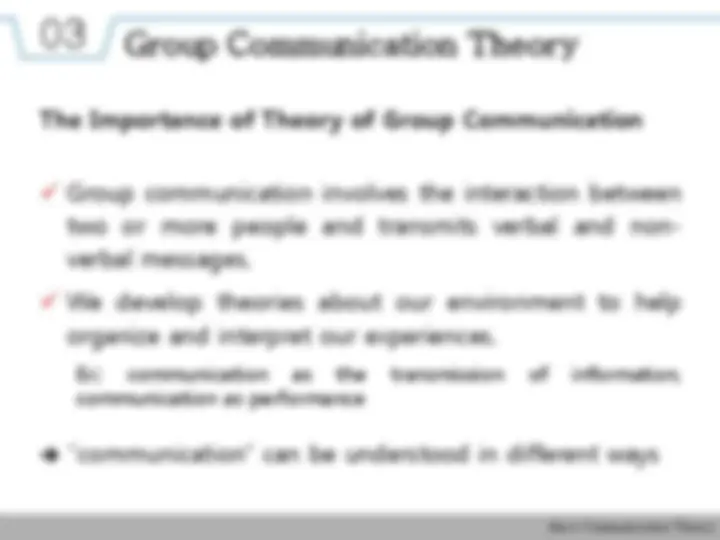
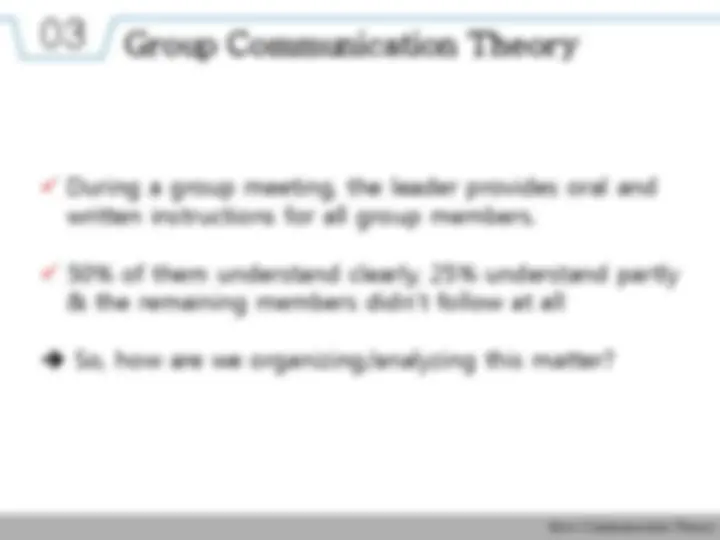
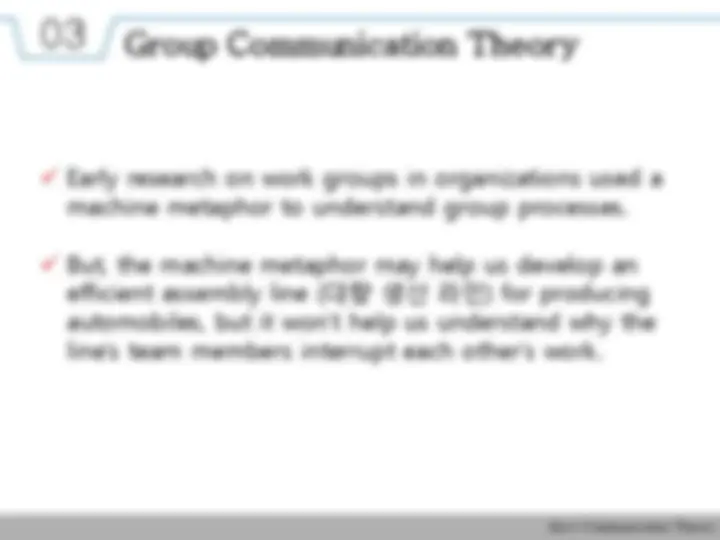
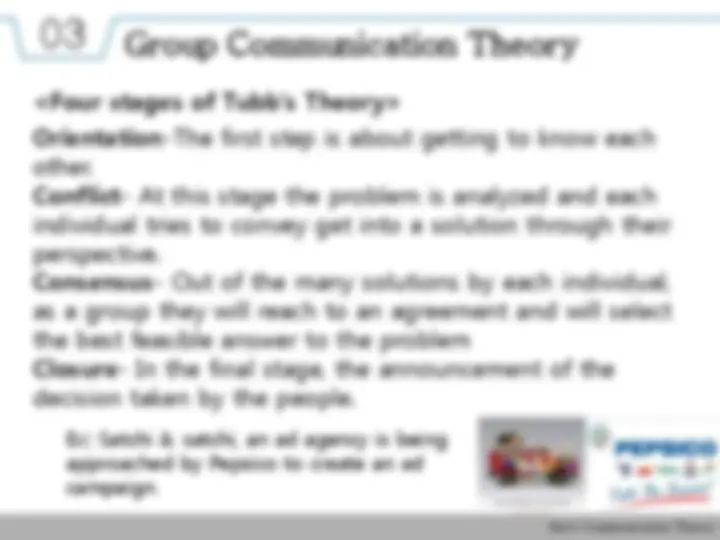
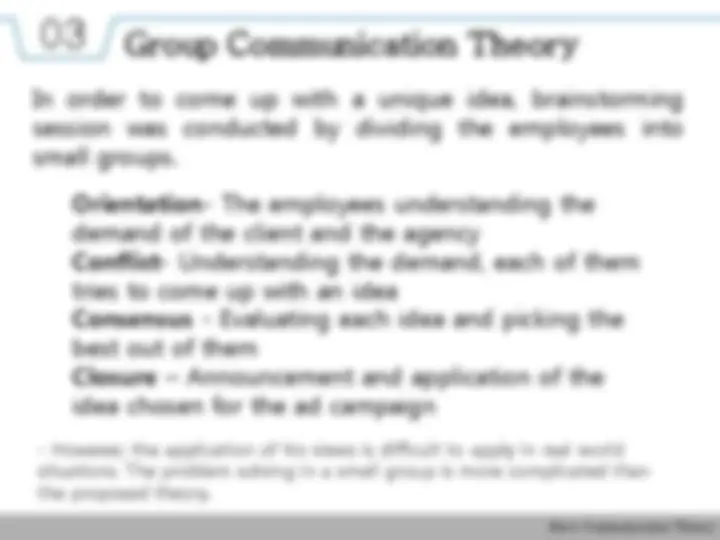
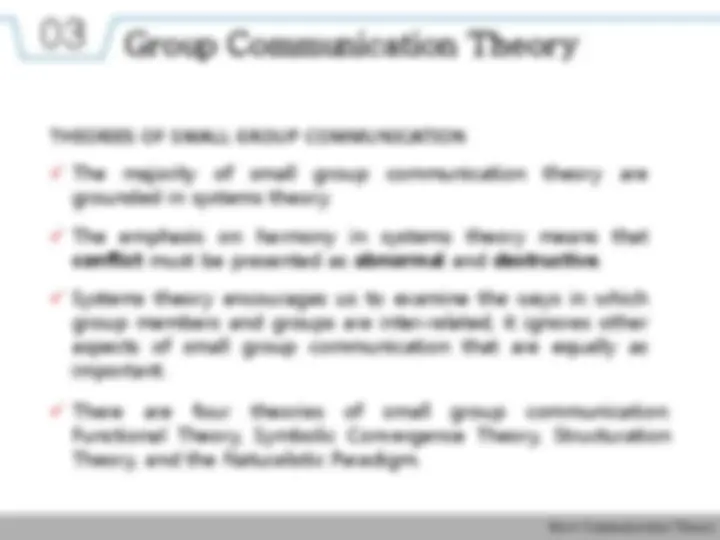
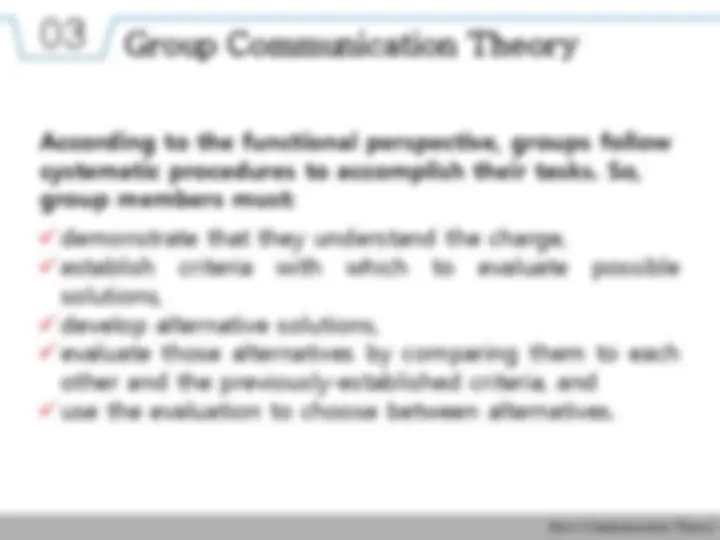
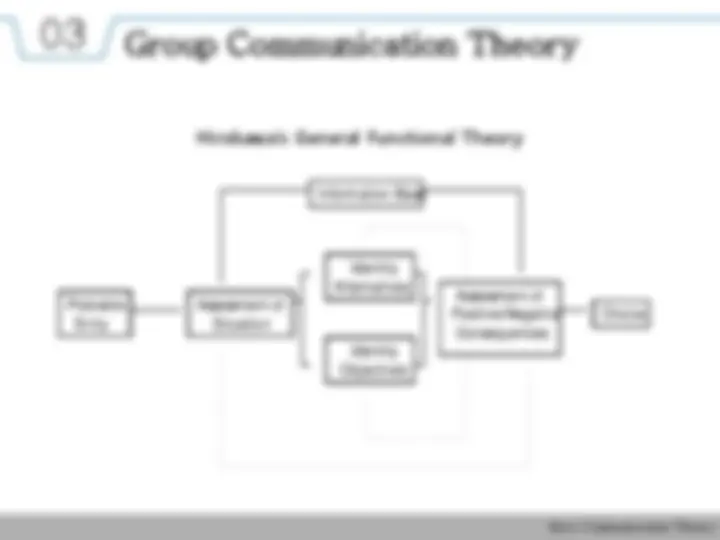
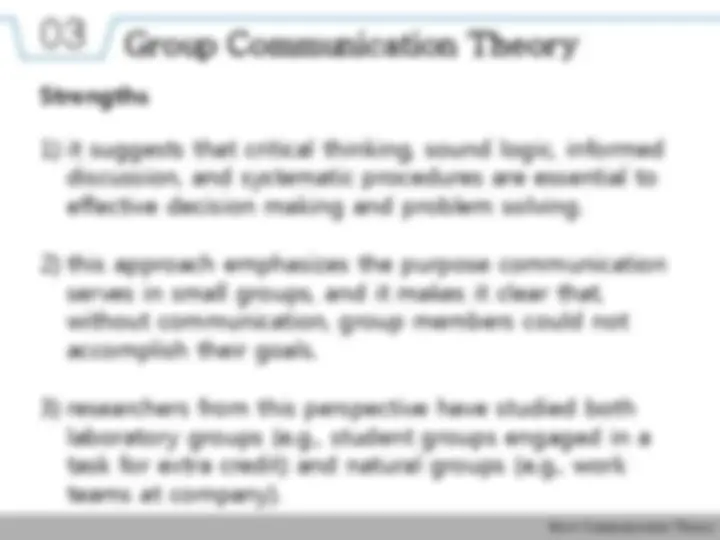
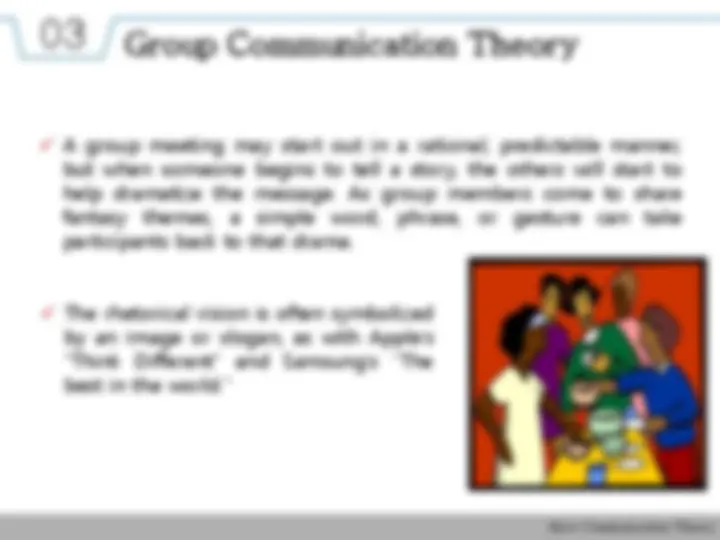
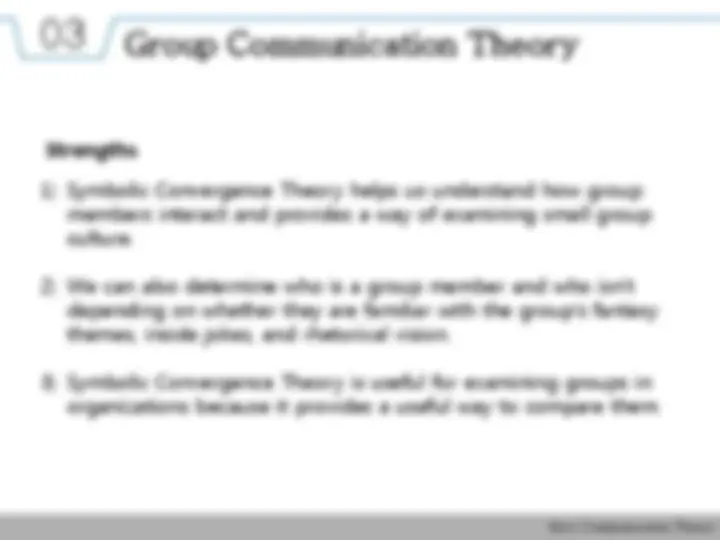
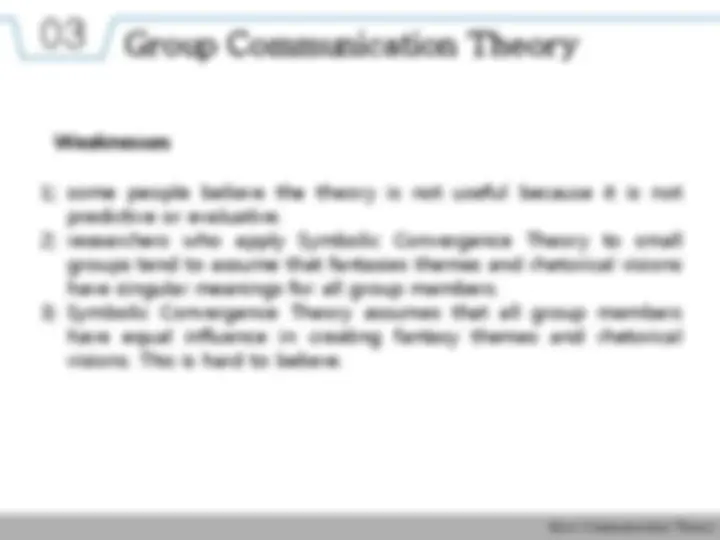
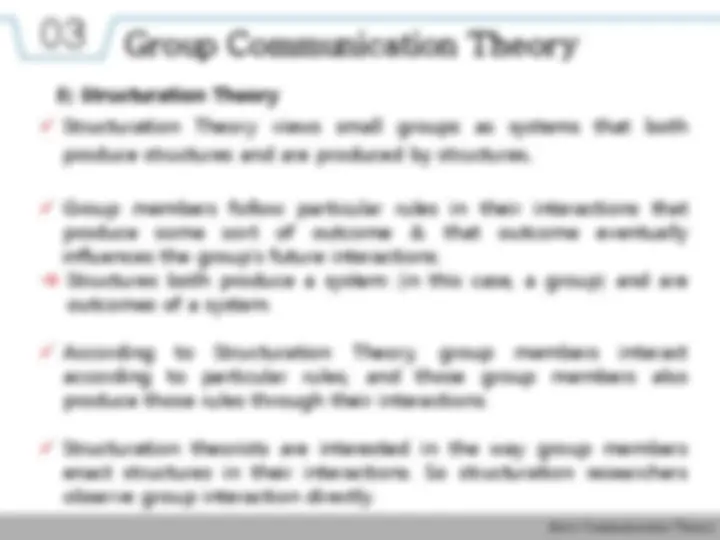
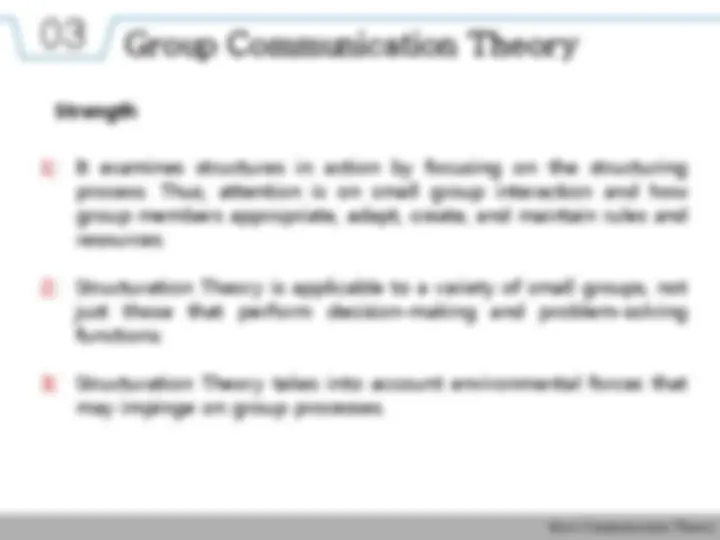
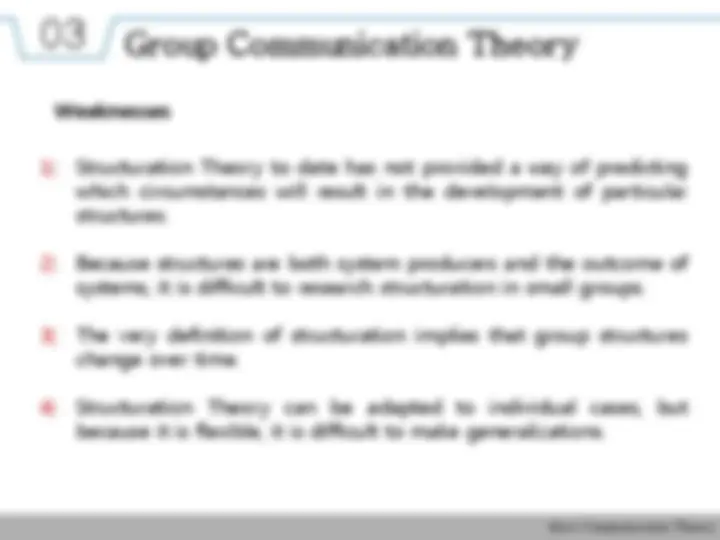
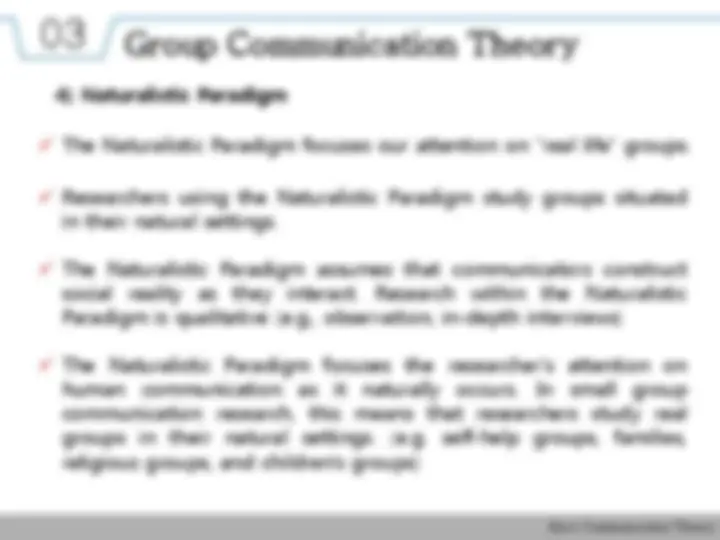
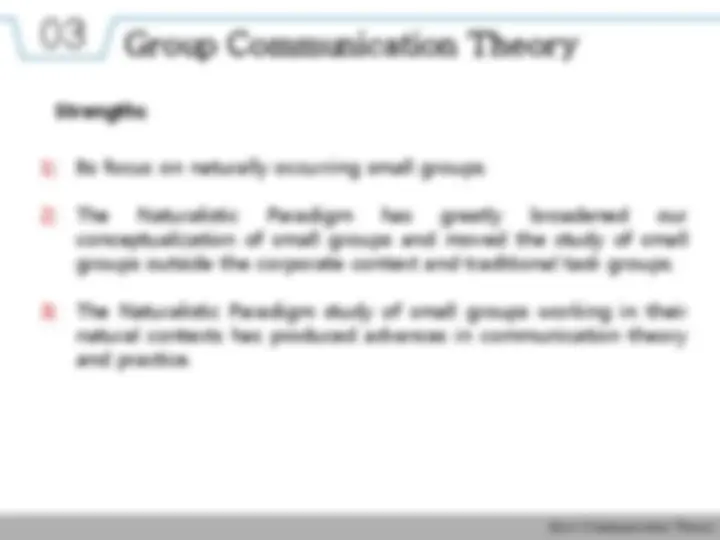
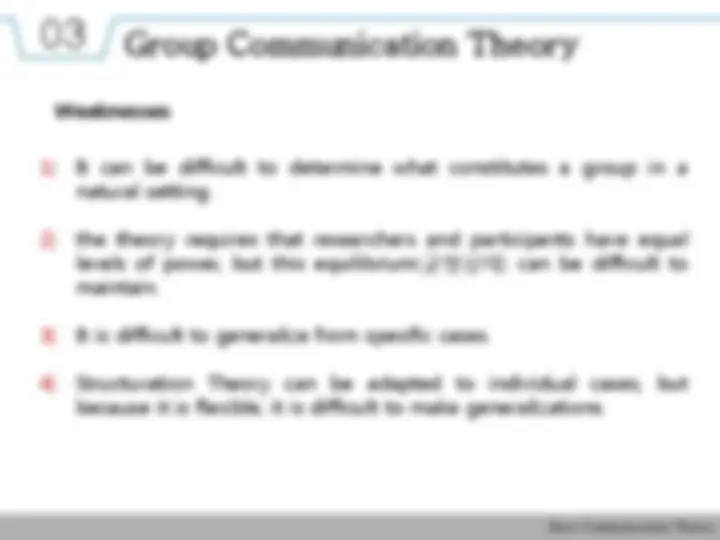
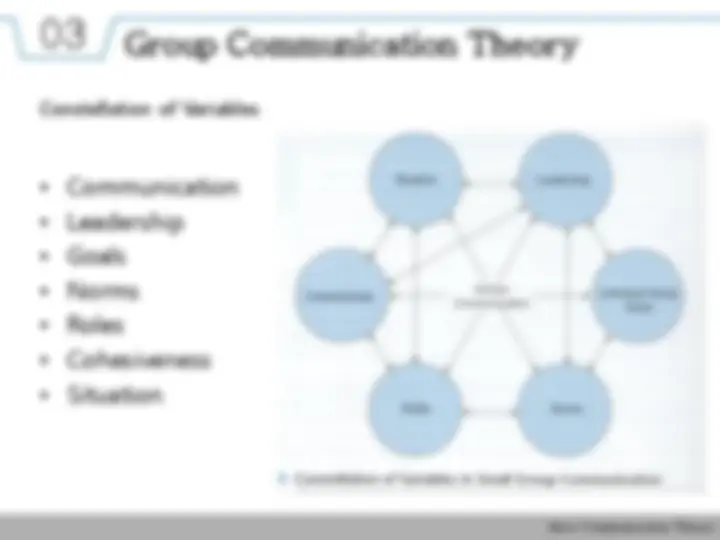




Study with the several resources on Docsity

Earn points by helping other students or get them with a premium plan


Prepare for your exams
Study with the several resources on Docsity

Earn points to download
Earn points by helping other students or get them with a premium plan
Community
Ask the community for help and clear up your study doubts
Discover the best universities in your country according to Docsity users
Free resources
Download our free guides on studying techniques, anxiety management strategies, and thesis advice from Docsity tutors
Group Communication theory in describes interaction between peoples, transmission of information, creating new ideas, problems solving and four stages of tubb's theory and functional, symbolic covergence and naturalistic theories.
Typology: Slides
1 / 29

This page cannot be seen from the preview
Don't miss anything!






















2015 spring sem Prof. Jaewon Joo
<집단(그룹) 커뮤니케이션>
During a group meeting, the leader provides oral and written instructions for all group members. 50% of them understand clearly, 25% understand partly & the remaining members didn’t follow at all So, how are we organizing/analyzing this matter?
Early research on work groups in organizations used a machine metaphor to understand group processes. But, the machine metaphor may help us develop an efficient assembly line (대량 생산 라인) for producing automobiles, but it won't help us understand why the line's team members interrupt each other's work.
The Nominal group technique is usually employed after a brainstorming session. Here the group members are asked to write down all the possible solutions for the existing problem and asked to rank them.
<Four stages of Tubb’s Theory> Orientation - The first step is about getting to know each other. Conflict - At this stage the problem is analyzed and each individual tries to convey get into a solution through their perspective. Consensus - Out of the many solutions by each individual, as a group they will reach to an agreement and will select the best feasible answer to the problem Closure - In the final stage, the announcement of the decision taken by the people. Ex) Satchi & satchi, an ad agency is being approached by Pepsico to create an ad campaign.
THEORIES OF SMALL GROUP COMMUNICATION The majority of small group communication theory are grounded in systems theory. The emphasis on harmony in systems theory means that conflict must be presented as abnormal and destructive. Systems theory encourages us to examine the ways in which group members and groups are inter-related, it ignores other aspects of small group communication that are equally as important. There are four theories of small group communication: Functional Theory, Symbolic Convergence Theory, Structuration Theory, and the Naturalistic Paradigm.
(1) Functional Theory The functional approach to small group communication is concerned with the results or outcomes of group behaviors and structures. Communication as the tool that group members use to solve problems and make decisions. Communication helps group members by promoting rational judgments and critical thinking, as well as preventing group members from faulty decision-making and flawed problem solving.
According to the functional perspective, groups follow systematic procedures to accomplish their tasks. So, group members must: demonstrate that they understand the charge, establish criteria with which to evaluate possible solutions, develop alternative solutions, evaluate those alternatives by comparing them to each other and the previously-established criteria, and use the evaluation to choose between alternatives.
Information Base Identity Alternatives Identity Objectives Assessment of Positive/Negative Consequences Choice Assessment of Situation Probable Entry Hirokawa’s General Functional Theory
Weaknesses
(2) Symbolic Convergence Theory "Symbolic" refers to verbal and nonverbal messages and "convergence" refers to shared understanding and meaning. In small groups, members develop private code words and signals that only those inside the group understand. Central to this theory is the idea that group members share fantasies that serve as critical communication episodes, forming the basis for members' sense-making. Fantasy themes develop when group members actively engage in dramatizing, elaborating on, and modifying a story.
Strengths
Weaknesses